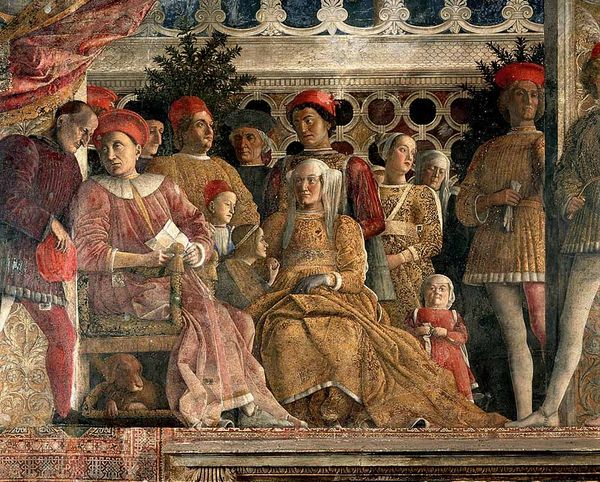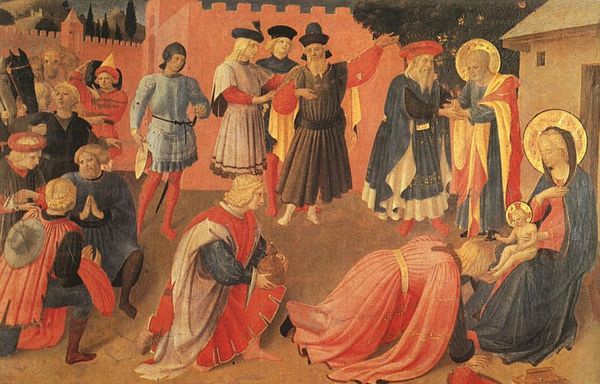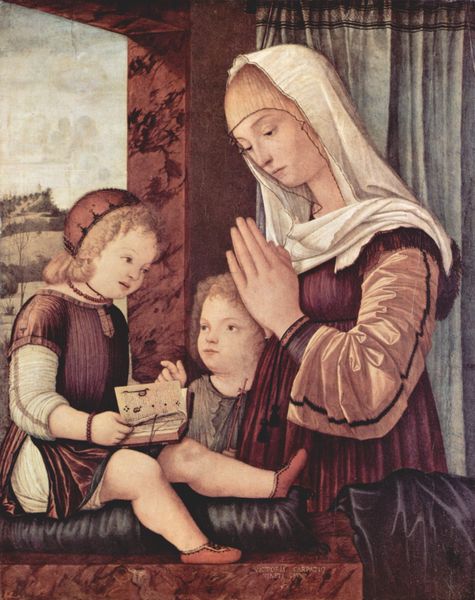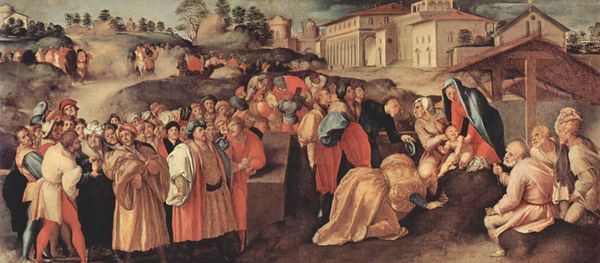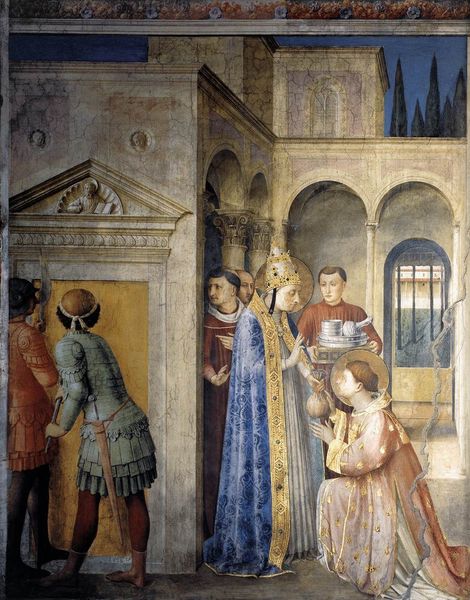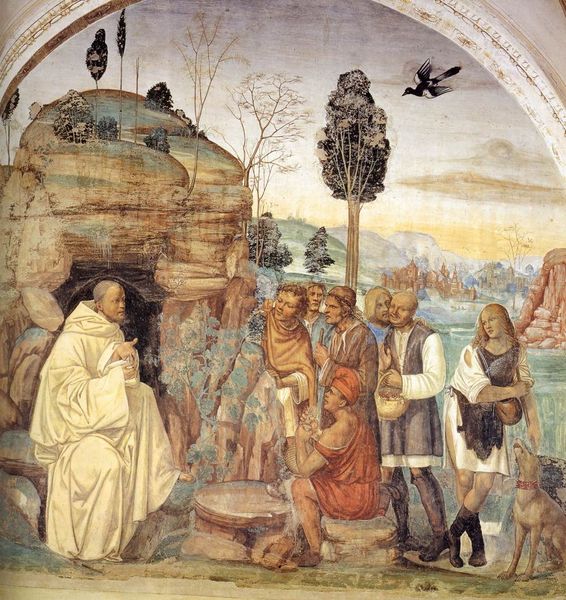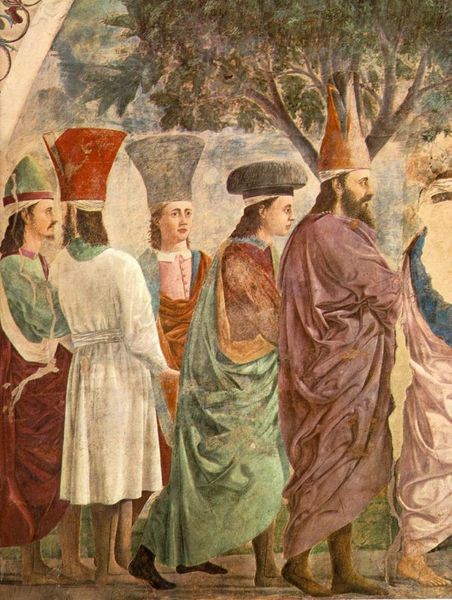
fresco
#
portrait
#
high-renaissance
#
narrative-art
#
fresco
#
oil painting
#
studio composition
#
group-portraits
#
painting painterly
#
painting art
#
history-painting
#
italian-renaissance
Copyright: Public domain
Curator: Looking at "The House of Ludovico Gonzaga, Bridegroom Decorated Wall and his Son," painted in fresco around 1475 by Andrea Mantegna, I’m struck by its intimate yet formal quality. The depiction of the Gonzaga family, caught seemingly in a moment of domestic life, has an intriguing stillness. Editor: My initial reaction is a feeling of incredible labor invested. Considering the scale and medium, the fresco technique alone would have required intense physical effort, skilled craftsmanship and costly materials, making it not merely a painting, but a product of considerable expense. Curator: Indeed. This wasn't simply decorative; it was a calculated display of power. Frescoes, by their very nature, are integrated with the architecture. They assert the family's presence, their history, within the very fabric of the building and society at large. Notice how Mantegna has depicted the sitters with realism? Editor: Absolutely. Considering Mantegna’s meticulous approach, you can really see that reflected in the application of each layer of plaster and pigment and, given the dampness often associated with frescos, I would consider it very challenging. Curator: Think about the societal expectations surrounding artistic patronage during the Renaissance. Works like this functioned as powerful statements, reinforcing dynastic ambitions and projecting an image of cultivated refinement. The composition is very controlled, isn't it? A carefully orchestrated presentation of the family, with Ludovico at the centre. Editor: It brings into question how labor relations may have contributed to this masterpiece. Artisans, apprentices and assistants probably contributed in a significant part in producing this piece; not just Mantegna himself, the master painter! What's fascinating is considering the role of assistants within the production of luxury and how the master-artist might claim total ownership of such objects while drawing on labor hierarchies. Curator: A fitting observation. This work reflects a complex negotiation of power dynamics, both within the Gonzaga court and within the broader social landscape. Editor: Seeing Mantegna's fresco reminds me that artistic production involves both immense labor and creative vision, especially during the height of the Renaissance, so visible in its materiality and societal impact. Curator: And that art offers insight into history, while being a commodity. Editor: Precisely, something to always bear in mind.
Comments
No comments
Be the first to comment and join the conversation on the ultimate creative platform.


